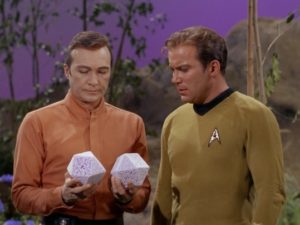5 Tips for Increasing Planned Giving Commitments to Your Nonprofit
How to Motivate More Donors to Put Your Organization in Their Will
In 2017, donors gave a total of $410 billion to charity. Of that, $35.7 billion came in the form of planned giving bequests. That means about 9% of charitable gifts are given in people’s wills. The lesson is clear:
Your nonprofit ought to be devoting serious attention to improving your planned giving strategies.
But like many things that seem obvious, securing more legacy and planned gifts is easier said than done. Planned giving marketing entails unique challenges. Among them:
- – Hard to measure effectiveness of planned giving marketing
- – Long periods of time between ‘conversion’ and gift
- – Many people do not write wills at all
- – Hard to align marketing with the times people are writing their wills
- – If wills are already written, equally difficult to motivate people to amend them
 Planned giving is sort of like an original Star Trek episode called By Any Other Name, where an alien race from Andromeda invades the Milky Way. Their ships were multi-generational, meaning the beings who left their home world would die before reaching the new galaxy.
Planned giving is sort of like an original Star Trek episode called By Any Other Name, where an alien race from Andromeda invades the Milky Way. Their ships were multi-generational, meaning the beings who left their home world would die before reaching the new galaxy.
If you’re in charge of planned giving at your nonprofit, you probably won’t be there when most of the gifts you secure actually come through. But that’s okay! It’s your nonprofit’s mission you’re serving. You’re building and sustaining it for the long term.
With these challenges in mind, here are five tips for increasing planned giving commitments to your nonprofit, followed by a few additional resources.
5 Planned Giving Tips to Strengthen Your Nonprofit’s Long Term Impact
1. Ask at the Right Time

Image by Gerd Altmann from Pixabay
According to US Legal Wills, the single best time to ask for planned gifts is when the person is writing their will. The problem is, you don’t know when that will be. Plus, many people put off writing a will for years.
This actually offers you an opportunity to do two things at once: Serve your donors by encouraging them to write a will and ask for a planned gift.
To serve them well and make it easy to follow through, compile a list of legal services that help people write wills and include them in your marketing. US Legal Wills bills itself as the only one that includes a charitable bequest page as a standard part of their will-writing process, so every client gets a chance to think about making a legacy gift. I haven’t verified that claim and have no affiliation with that site, but I’d certainly include them on my resources list if I were a nonprofit.
The right time also means asking when people are more likely to write their wills. Few people write wills before the age of 40. But some do, and the rates climb from there.
For donors in their 60s – 80s (often your most loyal, lifelong donors), they are the most likely to be either writing for the first time or revisiting their wills.
I would recommend initiating your planned giving marketing to loyal donors over age 40, and then create even more targeted communications for retired donors.
2. Ask Repeatedly
Since you don’t know when your donors will follow through on writing a will, you must continually remind them about making a planned gift to your nonprofit.
‘Continually’ doesn’t mean every week. But even just a few times per year, make planned giving part of your communications. Put this idea in your donors’ minds, and make it stick.
According to Michael Rosen, only 5.3% of Americans over 50 have put a charitable bequest in their will, but 33% are willing to consider it.
What does that tell you?
That at least 28% of people won’t mind if you remind them to make a planned gift, but otherwise will probably forget to follow through.
3. Ask the Right People
Which of your donors will be most responsive to a planned giving request?
Interestingly, it’s not just your major donors. Many middle-class donors will also be writing wills and want to include nonprofits as part of them. And this isn’t really that surprising. Suppose someone dies with $100,000 to their name. Not a huge amount of money, but certainly enough to leave a nice gift for a couple of nonprofits, with plenty to spare for their heirs.
So don’t limit your planned giving marketing to your wealthy and major donors only.
However, you do want to limit it to your loyal ones. One-time donors are pretty unlikely to add you to their wills. You’re looking for people who have made your nonprofit part of their lives over an extended period of time. When they think of you, they also think of their own lives, because you have been part of it for so long.
For them, it’s a natural request.
A good starting place for creating a segmented list is any recurring donors who have been giving for more than one year. If you want to segment further, set a minimum monthly amount. But again – don’t go too high.
Someone might only be giving $20 per month to your nonprofit. But maybe they’re giving $20 to several others too, with the occasional major gift or fundraising event splurge. That donor has money. If you ask them to consider committing to a planned gift, they will be receptive.
Also, unmarried donors (and any others without kids) tend to be even more generous with planned gifts, as you would expect.
4. Be Clear about the Impact of their Gift

Image by Gerd Altmann from Pixabay
Planned giving looks and feels different than any other kind of giving.
This article reports on a donor study using brain imagery while people were asked about various kinds of giving. Planned giving produced a very different response than all other types.
People who give to charities as part of their will care immensely about using their money to produce a powerful impact. They know that leaving a five, six, or seven figure gift allows a nonprofit to do far more than smaller monthly gifts.
Communicate to your donors what large gifts such as these will make possible.
5. Use Storytelling – of Other Planned Giving Donors
Talk to other donors who have already committed to put your nonprofit in their wills. Tell these stories in your marketing.
This accomplishes several things. Most of all, it normalizes the concept of making a planned legacy gift. Also, the more donor stories you tell, the more likely one of them will resonate with particular people. The reasons given in the story will connect with other donors, and make them want to set up a bequest.
A Planned Giving Campaign Example
Put all these planned giving tips together and you have the makings of an actual campaign.
Start off with any loyal donors over age 40. Focus even more on donors without children, but don’t neglect those with families either.
Continue following up, occasionally, but not too often. Tell stories of other donors. Emphasize the impact larger gifts make possible for your mission.
Increase your personalized outreach once donors pass age 60. If possible, this would include phone calls and even personal visits.
Track your results as much as possible, and make sure the contact and commitment data gets stored safely so new staff can pick up where previous ones left off.
Additional Resources with Planned Giving Tips and Strategies
Here’s a book about legacy fundraising (another term for planned giving):
Why legacies are brilliant for charities and how to get them
Online resources from various nations:
UK
EU
https://efa-net.eu/tag/legacies
US
http://sofii.org/the-main-areas-of-fundraising/legacies-and-bequests
Research organizations
Need Help Writing Your Planned Giving Marketing?
ProActive Content specializes in fundraising copywriting. If you have a planned giving campaign in the works but either don’t have time to produce the content or need help crafting effective messaging and engaging stories, reach out to us for help.
Want more content? Get weekly nonprofit fundraising and copywriting tips, strategies, and motivations in the ProActive Insights newsletter.

